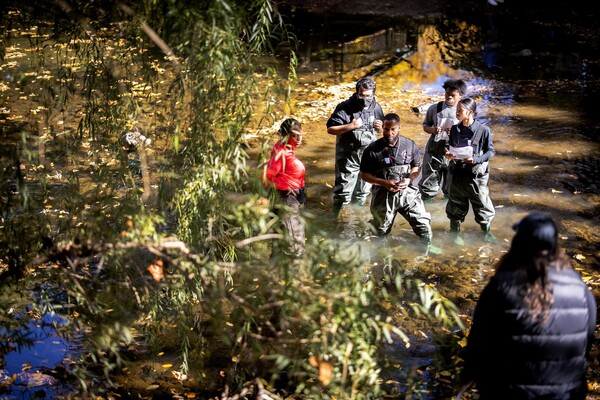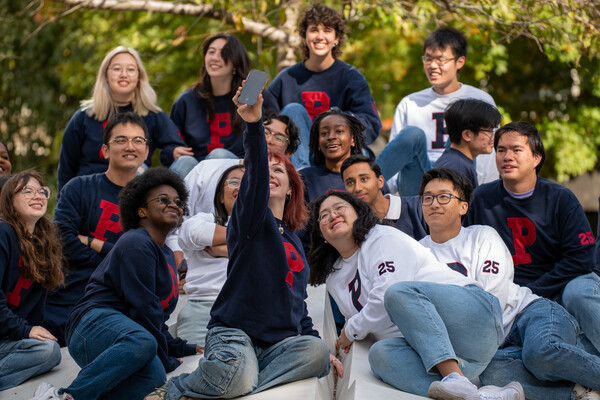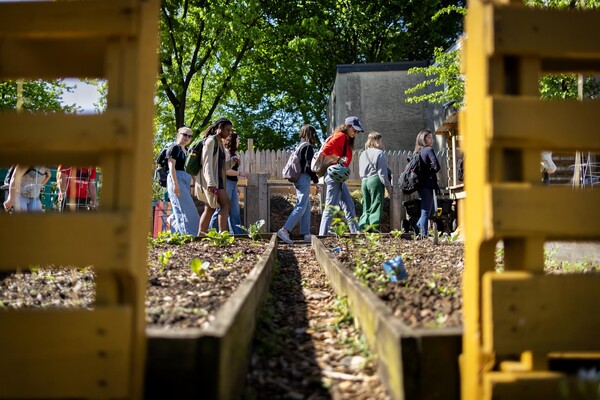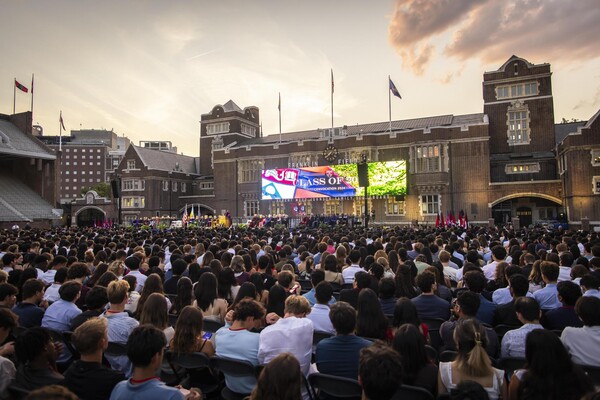What’s Jewish art? Scholars discuss
The Center for Advanced Jewish Studies fellows knew what they were getting into when they called their annual colloquium meeting to order. It seemed like everybody else knew, too.
“This meeting will be illuminating, perhaps contentious, but of course we all know that’s a good thing,” said SAS Associate Dean Rebecca Bushnell in her opening remarks.
The theme of the seventh annual Gruss Colloquium in Judaic Studies, held in Logan Hall from April 30 to May 2, was “Modern Jewry and the Arts.” This topic marked a change from past years, when CAJS tackled more traditional Judaic studies territory like biblical studies and Jewish history. The multidisciplinary, at times ambiguous, question of the relationship between Jews and the arts opened the door to more debates and covered wider territory than the center had seen before, said CAJS Director David Ruderman.
For the 18 CAJS fellows who presented papers at the colloquium, the event was the culmination of months of research together. The fellows came from eight countries to study at the CAJS for a semester or a year. They represented a wide swath of ages and ranged from traditional Judaic studies scholars to postmodern upstarts, including an unprecedented proportion of non-Jews.
“The conflicts were always civil. I mean no one punched each other,” Ruderman said after the event. “But there was a period during the year when there was such divisiveness that we couldn’t even get a program together for the conference. Finally they came together. What we saw at the conference was a real attempt to respect and understand the other.”
The range of fellows’ areas of study was evident in the colloquium program, which included a paper about Yiddish folksongs about Stalin in the Soviet Union, one about an exhibit in New York of Jewish artist Ben Shahn and another about communal movie-watching on a 1950s kibbutz.
For every panel, three scholars presented papers, after which a respondent commented on the papers. Then the audience let loose. Some audience members asked informational questions, but others, many of whom were scholars themselves, had ideas about where the papers had it all wrong.
“Many of the conflicts came out of the ambiguity of the topic,” Ruderman said later. “What does it really mean to talk about the relationship between Judaism and the aesthetic? What do you do with an artist who just happens to be Jewish? Is that Jewish culture, or is that not Jewish culture?”
Even a single topic like Jewish music inspired several different approaches. Hankus Netsky, a longtime musicologist from the New England Conservatory of Music, offered a straightforward historiographic account of Jewish wedding musicians in Philadelphia from 1915 to 1972.
Responding to Netsky’s paper, Wesleyan’s Mark Slobin said it hadn’t paid enough attention to the ways Jewish culture past and present had been commodified. “Klezmer survives because of the invention of world music as a category by record companies,” he said.
After the morning coffee break, Jonathan Karp from Binghamton University (formerly SUNY-Binghamton) presented a paper about Jewish producers and recording company owners who worked with African-American musicians from the 1920s to the 1950s. Some of these Jews “recoiled” from their heritage, Karp said, but he nonetheless used the artistic relationships between the musicians and the producers to draw conclusions about how African-Americans and progressive Jews related to each other in that period.
Later this year, the University of Pennsylvania Press will release a book of the papers from the colloquium.







